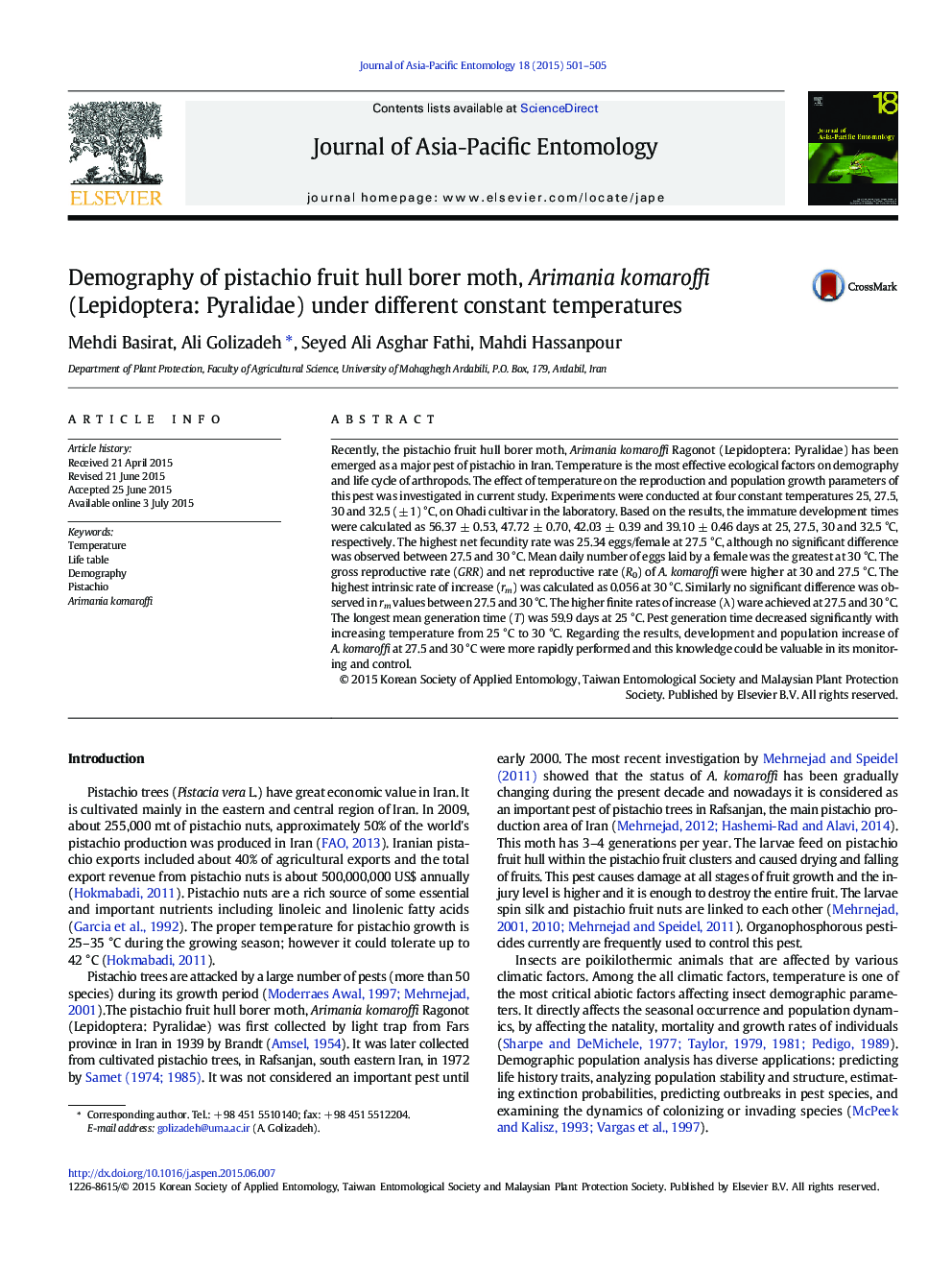| کد مقاله | کد نشریه | سال انتشار | مقاله انگلیسی | نسخه تمام متن |
|---|---|---|---|---|
| 4524652 | 1323585 | 2015 | 5 صفحه PDF | دانلود رایگان |

• We investigated the demography of A. komaroffi at an optimum temperature range for pistachio trees growing.
• The highest performance was observed at 27.5 and 30 °C, indicating a high capita growth rate within this range.
• The findings could be valuable in improvement of the decision support system management by providing better predictions.
Recently, the pistachio fruit hull borer moth, Arimania komaroffi Ragonot (Lepidoptera: Pyralidae) has been emerged as a major pest of pistachio in Iran. Temperature is the most effective ecological factors on demography and life cycle of arthropods. The effect of temperature on the reproduction and population growth parameters of this pest was investigated in current study. Experiments were conducted at four constant temperatures 25, 27.5, 30 and 32.5 (± 1) °C, on Ohadi cultivar in the laboratory. Based on the results, the immature development times were calculated as 56.37 ± 0.53, 47.72 ± 0.70, 42.03 ± 0.39 and 39.10 ± 0.46 days at 25, 27.5, 30 and 32.5 °C, respectively. The highest net fecundity rate was 25.34 eggs/female at 27.5 °C, although no significant difference was observed between 27.5 and 30 °C. Mean daily number of eggs laid by a female was the greatest at 30 °C. The gross reproductive rate (GRR) and net reproductive rate (R0) of A. komaroffi were higher at 30 and 27.5 °C. The highest intrinsic rate of increase (rm) was calculated as 0.056 at 30 °C. Similarly no significant difference was observed in rm values between 27.5 and 30 °C. The higher finite rates of increase (λ) ware achieved at 27.5 and 30 °C. The longest mean generation time (T) was 59.9 days at 25 °C. Pest generation time decreased significantly with increasing temperature from 25 °C to 30 °C. Regarding the results, development and population increase of A. komaroffi at 27.5 and 30 °C were more rapidly performed and this knowledge could be valuable in its monitoring and control.
Figure optionsDownload as PowerPoint slide
Journal: Journal of Asia-Pacific Entomology - Volume 18, Issue 3, September 2015, Pages 501–505